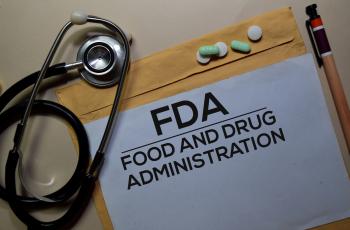Access to CGM – A Barrier to TIR
Time in Range, a metric most often calculated using a CGM, is a valuable glucose management tool that people with diabetes can use day-to-day. Unfortunately, not all people with diabetes have access to a CGM. Read to learn more about barriers to these life-changing tools and what we can do to improve access.
Time in Range (TIR) can empower people with diabetes by providing real-time health data to inform their diabetes decision making. Tracking TIR requires continuous glucose measurements. Unfortunately, awareness, cost, and racial bias in the healthcare system prevent many people with diabetes from using a continuous glucose monitor (CGM), a device that people can use to constantly monitor their glucose and avoid complications.
Out of the over 7 million people with diabetes in the US who rely on insulin, only about 25% of them have a CGM. Access to CGM for the 27 million people with diabetes who do not use insulin is even more limited because insurance typically does not cover this technology for them.
At diaTribe, we believe that every person with diabetes should have access to the tools that help them live happier, healthier lives. We believe that everyone with diabetes should have access to TIR to give them information to manage their disease.
Importance of CGM and TIR
CGM provides regular blood glucose readings to track time spent in range, to identify patterns in blood glucose, and anticipate high and low blood sugars. These devices have been shown to be superior to self-monitoring of blood glucose in lowering A1C, reducing hypoglycemia, and increasing TIR in both people with type 1 diabetes and people with type 2 diabetes using insulin.
TIR is a metric to help people with diabetes better understand their glycemic control. It is the percentage of time that a person spends in a target blood glucose range. The target range may vary by person but general guidelines recommend staying within a range of 70-180 mg/dl. While a person with diabetes typically does an A1C test every two to three months, people who use a CGM can see their TIR on a daily, even hourly, basis. TIR goes beyond A1C in analyzing blood glucose levels because it provides a more complete picture of glycemic control. Studies have shown that as one’s TIR increases, health complications decrease. CGM provides information that people with diabetes can use to take the action they need to increase their TIR.
Barriers and disparities in CGM and TIR
Although CGMs have been shown to improve one’s diabetes management, many people do not have access to these life-changing devices largely due to awareness, cost, and bias in the healthcare system. A lack of access to CGM means people cannot use TIR since it is significantly more challenging to measure without a monitor.
CGM access is unequal across different demographics, as CGMs are used significantly less often by people of color. Among people with type 1 diabetes, 71% of non-Hispanic white people use CGM, while only 37% of Hispanic and 28% of Black individuals use CGM. And compared to non-Hispanic white individuals, Black and Hispanic individuals are less likely to start on a CGM and continue using the device after six months. While CGM use has grown from 6% in 2011 to 38% in 2018 among people with type 1 in general, disparities among Black and Hispanic individuals are continuing to grow.
Below are some of the main drivers of CGM access disparities:
- Knowledge about CGM and TIR – According to diabetes market research company dQ&A, at least 20% of people with diabetes do not know what a CGM is. Additionally, 36% of people with diabetes have never heard of TIR or do not know the benefits of TIR. This is why all of us at diaTribe are working to increase awareness of TIR for people with diabetes, healthcare providers, and in regulatory decision-making. We hope our efforts will encourage doctors to start conversations about CGM with their patients and vice versa, and ultimately lead to increased adoption of both CGM and TIR for daily use.
- Insurance coverage - In a Clinical Diabetes study, about 40% of respondents noted lack of insurance coverage as their primary reason for not trying CGM. Likewise, 55% reported CGM being “too expensive” as their primary reason. Certain types of insurance do not cover CGM for all people with diabetes, and if they do, several requirements, such as restrictive eligibility criteria, can still block people from accessing a CGM. Lack of comprehensive insurance coverage for CGM means that people must pay out of pocket for these devices, which can be expensive, ranging from $150 to $500 a month. As a result, CGM use is lowest among people with lower incomes.
- Bias among healthcare providers - While healthcare coverage, education, and income can limit CGM access, healthcare provider bias towards people of color has shown to be the most significant barrier to CGM. Healthcare providers are less likely to talk to people of color about CGM, which means they do not get prescribed these devices as much as white people do. Providers also tend to be less empathetic toward individuals from low socioeconomic groups, and therefore do not recommend devices like CGM for them as often. And this is not unique to diabetes care; it happens in practically every part of health care. Although people with diabetes turn to their doctors for advice on care and treatment, people of color and other underserved communities do not receive the same quality care as high-income white people. Health professionals’ biased assumptions act as a barrier to CGM and TIR for people of color, and ultimately have detrimental health consequences.
How we can increase CGM and TIR access
- Advocacy - We hope to increase adoption of CGM and TIR through education and advocacy efforts. We encourage healthcare providers to talk with their patients about their options, and people with diabetes should do the same with their care team. diaTribe publishes many articles on CGM and TIR to continue informing healthcare providers and people with diabetes about these valuable tools.
- Insurance coverage - Considering the high cost of CGM, broader coverage would lead to wider use of CGM and TIR. We believe more people could improve their diabetes management with CGM and TIR if coverage were more expansive. This is especially the case for people on Medicaid, who are often low-income; click here to see if Medicaid in your state covers CGM.
- Addressing bias in care - To combat discrimination in diabetes care, we all have a responsibility to start recognizing and understanding our own prejudicial attitudes. We need to be honest with ourselves in order to begin addressing our implicit biases. We should also continue educating ourselves on the ways people of color with diabetes face unique challenges. Several factors like an individual’s income, education, and even weight, can limit one’s access to CGM, but race is perhaps a greater barrier. We encourage you to read our previous articles on racial disparities in diabetes to further understand how
- race and ethnicity affect care:
If you are a person with diabetes who has felt you faced bias, we ask you to share your story with us at [email protected]
Want to help diaTribe expand CGM access for Americans? Join diaTribe Change and sign the petition to tell your lawmakers to support Medicaid legislation giving everyone with diabetes on insulin access to CGM. Learn more here.
None of this work will happen overnight, as much as we wish it would. All policymakers, healthcare providers, people with diabetes, and their allies have a responsibility to help break down barriers to quality care for those who need it most, especially communities of color. At diaTribe, we will continue to advocate for equitable access to CGM, so that people can use TIR and improve their daily diabetes management.


